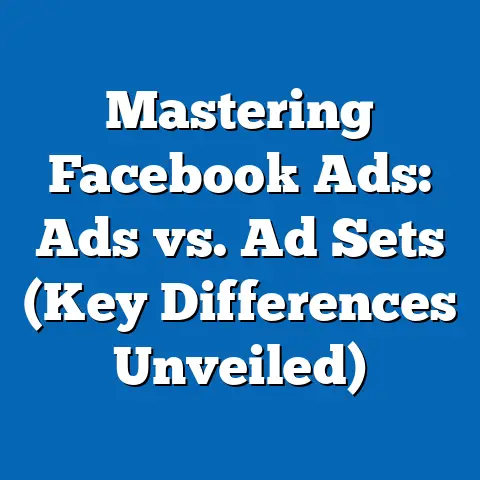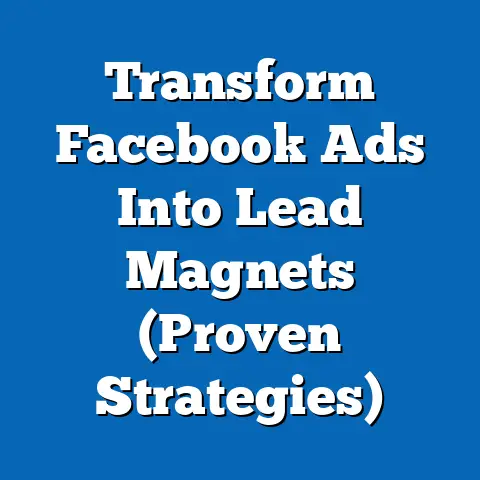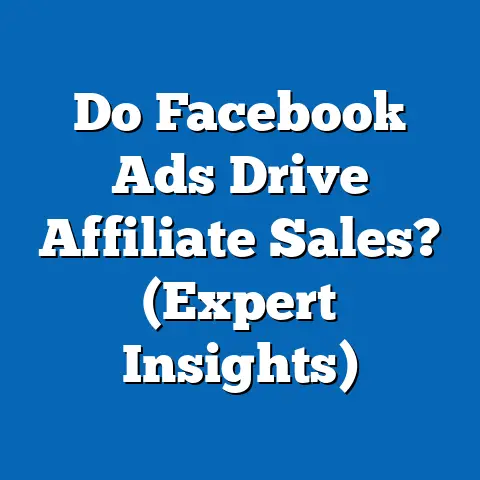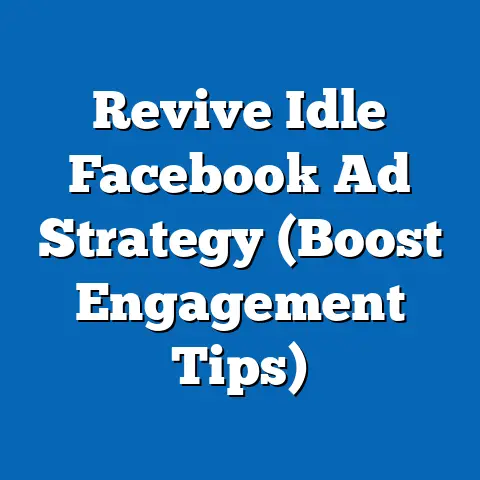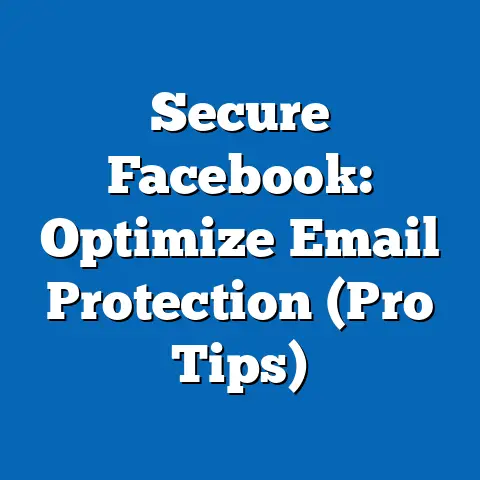Maximize ROI with Facebook & Google Ads (Pro Strategies)
Remember the fable of the tortoise and the hare? The hare, confident in its speed, raced ahead only to be outpaced by the tortoise’s slow and steady persistence. In the world of digital advertising, this tale resonates deeply. Many businesses, like the hare, rush into Facebook and Google Ads, hoping for immediate results, only to find themselves lagging behind. The real victory, like the tortoise’s, lies in a strategic, methodical approach.
In today’s cutthroat digital landscape, where businesses are vying for every click and conversion, mastering both Facebook and Google Ads is no longer a luxury—it’s a necessity. But simply running ads isn’t enough. To truly succeed, you need to understand how to maximize your return on investment (ROI) on both platforms. This guide will walk you through pro strategies that will help you achieve just that.
Understanding ROI in Digital Advertising
ROI, or Return on Investment, is the holy grail of digital advertising. It’s the measure that tells you whether your efforts are paying off, and how effectively you’re using your marketing budget. In simple terms, ROI is the profit you make from your advertising efforts, relative to the cost of those efforts.
Why is it so important? Because without understanding your ROI, you’re essentially flying blind. You might be spending money on ads that aren’t generating any real returns, or you might be missing out on opportunities to invest in campaigns that could be highly profitable.
To truly evaluate ROI, there are a few key metrics I always keep an eye on:
- Cost per Acquisition (CPA): This tells you how much it costs to acquire a new customer through your advertising efforts. A lower CPA is generally better, as it means you’re getting more customers for your money.
- Return on Ad Spend (ROAS): This metric measures the revenue you generate for every dollar you spend on advertising. A ROAS of 4:1, for example, means you’re generating $4 in revenue for every $1 you spend on ads.
- Customer Lifetime Value (CLV): This is an estimate of the total revenue a customer will generate for your business over the course of their relationship. Understanding your CLV helps you determine how much you can afford to spend on acquiring a new customer.
Before you even launch your first ad campaign, take a moment to set clear, measurable objectives. What are you hoping to achieve? Are you looking to increase brand awareness, generate leads, drive sales, or something else? Your objectives will determine which metrics you should focus on, and how you’ll gauge the success of your campaigns. I’ve seen businesses waste a ton of money by not having a clear goal.
Key Takeaway: ROI is the ultimate measure of your advertising success. Set clear objectives and track key metrics like CPA, ROAS, and CLV to ensure you’re getting the most bang for your buck.
Getting Started with Facebook Ads
Facebook Ads is a powerhouse for reaching a massive audience with incredible precision. With over 2.9 billion monthly active users, Facebook offers unparalleled opportunities to connect with potential customers. But to truly harness the power of Facebook Ads, you need to understand its key components and how to use them effectively.
At the heart of a successful Facebook Ads campaign are three critical elements:
- Audience Targeting: Facebook’s detailed targeting options are what set it apart. You can target users based on demographics, interests, behaviors, and even their connections. Defining your target audience is crucial. I’ve seen campaigns explode simply by refining the audience to something more specific.
- Ad Formats: Facebook offers a variety of ad formats, from simple image ads to engaging video ads and interactive carousel ads. The key is to choose the format that best suits your message and target audience.
- Compelling Ad Content: No matter how well you target your audience or choose your ad format, your campaign will fall flat if your ad content isn’t engaging. You need to grab users’ attention with compelling visuals and persuasive copywriting.
Pro Strategies for Engaging Ad Content
Creating engaging ad content is an art and a science. Here are a few pro strategies I’ve learned over the years:
- Visuals are Key: In a visually driven platform like Facebook, your visuals need to be eye-catching and relevant. Use high-quality images or videos that immediately grab users’ attention. I always advise testing different visuals to see what resonates best with your audience.
- Craft Compelling Copy: Your ad copy should be concise, persuasive, and relevant to your target audience. Highlight the benefits of your product or service, and use a strong call to action to encourage users to take the next step.
- A/B Testing is Your Friend: Never assume you know what will work best. Always A/B test different ad variations to see which ones perform best. Test different headlines, visuals, and calls to action to continuously optimize your ad performance.
The Power of the Facebook Pixel
The Facebook Pixel is a small piece of code that you install on your website. It tracks user behavior, allowing you to retarget audiences, measure conversions, and optimize your campaigns.
Here’s how the Facebook Pixel can help you improve your ROI:
- Retargeting: Retargeting allows you to show ads to users who have previously interacted with your website or Facebook page. This is a highly effective way to re-engage users who have shown interest in your products or services. I once ran a retargeting campaign that doubled my conversion rate.
- Conversion Tracking: The Facebook Pixel tracks conversions, allowing you to see which ads are driving the most sales or leads. This data is essential for optimizing your campaigns and maximizing your ROI.
- Lookalike Audiences: The Facebook Pixel can also help you create lookalike audiences, which are audiences that share similar characteristics to your existing customers. This is a great way to expand your reach and find new potential customers.
Key Takeaway: Facebook Ads offers powerful targeting options, a variety of ad formats, and the Facebook Pixel to track and optimize your campaigns. Focus on creating engaging ad content and leveraging the Facebook Pixel to maximize your ROI.
Mastering Google Ads
While Facebook excels at reaching a broad audience with detailed targeting, Google Ads shines when it comes to capturing users who are actively searching for your products or services. Google Ads allows you to reach potential customers at the moment they’re most receptive to your message.
The key components of a successful Google Ads campaign include:
- Keyword Research: Selecting the right keywords is essential for reaching the right audience. You need to choose keywords that are relevant to your products or services, and that your target audience is actually searching for.
- Ad Extensions: Ad extensions are additional pieces of information that you can add to your ads, such as sitelinks, phone numbers, and location information. Ad extensions can improve your ad’s visibility and click-through rate.
- Landing Page Optimization: Your landing page is where users end up after clicking on your ad. It’s crucial that your landing page is relevant to your ad, and that it’s designed to convert visitors into customers.
Keyword Research: The Foundation of Google Ads
Keyword research is the cornerstone of any successful Google Ads campaign. You need to understand what your target audience is searching for, and then choose keywords that match their search queries.
Here are a few tips for conducting effective keyword research:
Here are a few types of ad extensions you should consider using:
- Sitelink Extensions: These allow you to add links to specific pages on your website, such as your product pages or contact page.
- Call Extensions: These allow you to display your phone number directly in your ad, making it easy for customers to call you.
- Location Extensions: These allow you to display your business address in your ad, helping customers find your physical location.
Landing Page Optimization: Turning Clicks into Conversions
Your landing page is where the magic happens. It’s where you turn clicks into conversions, whether that’s a sale, a lead, or some other desired action.
Here are a few strategies for creating high-converting landing pages:
- Keep it Relevant: Your landing page should be directly relevant to your ad and the keywords you’re targeting.
- Make it Clear and Concise: Your landing page should have a clear headline, a concise description of your product or service, and a strong call to action.
- Optimize for Mobile: With more and more users browsing the web on their mobile devices, it’s crucial that your landing page is optimized for mobile.
Key Takeaway: Google Ads allows you to reach potential customers at the moment they’re actively searching for your products or services. Focus on keyword research, ad extensions, and landing page optimization to maximize your ROI.
Pro Strategies for Maximizing ROI
Now that you understand the basics of Facebook and Google Ads, it’s time to dive into some pro strategies that will help you maximize your ROI. These strategies involve integrating both platforms to create a cohesive and highly effective marketing campaign.
Here are a few pro strategies to consider:
- Cross-Channel Marketing: Create cohesive campaigns that leverage the strengths of both platforms. For example, you could use Facebook Ads to build brand awareness and drive traffic to your website, and then use Google Ads to capture users who are actively searching for your products or services.
- Retargeting Across Platforms: Utilize retargeting strategies effectively across Facebook and Google to re-engage users who have shown interest. For example, you could retarget users who visited your website from a Facebook ad with a Google ad, or vice versa.
- Budget Allocation Strategies: Distribute your budget effectively between the two platforms based on performance data. For example, if you’re seeing a higher ROAS on Google Ads, you might want to allocate more of your budget to that platform.
The Power of Cross-Channel Marketing
Cross-channel marketing involves creating a cohesive marketing experience across multiple channels, such as Facebook, Google, email, and more. By integrating your Facebook and Google Ads campaigns, you can create a more powerful and effective marketing strategy.
Here’s an example of how you could use cross-channel marketing to maximize your ROI:
- Facebook Ads for Brand Awareness: Use Facebook Ads to target a broad audience with engaging content that builds brand awareness.
- Drive Traffic to Your Website: Include a call to action in your Facebook ads that encourages users to visit your website.
- Google Ads for Conversion: Use Google Ads to target users who are actively searching for your products or services.
- Retargeting Across Platforms: Retarget users who visited your website from a Facebook ad with a Google ad, or vice versa.
Retargeting: Re-Engaging Interested Users
Retargeting is a highly effective way to re-engage users who have shown interest in your products or services. By showing ads to users who have previously visited your website or interacted with your Facebook page, you can increase your chances of converting them into customers.
Here are a few tips for effective retargeting:
- Segment Your Audience: Segment your retargeting audience based on their behavior. For example, you could retarget users who abandoned their shopping cart with a special offer.
- Use Dynamic Ads: Dynamic ads automatically show users products they’ve previously viewed on your website.
- Test Different Ad Creatives: Test different ad creatives to see which ones resonate best with your retargeting audience.
Budget Allocation: Optimizing Your Spend
One of the biggest challenges for marketers is figuring out how to allocate their budget effectively between different channels. The key is to track your performance data and adjust your budget accordingly.
Here are a few tips for optimizing your budget allocation:
- Track Your ROI: Track your ROI on both Facebook and Google Ads to see which platform is generating the most returns.
- Allocate More Budget to High-Performing Platforms: Allocate more of your budget to the platform that’s generating the highest ROI.
- Test Different Budget Levels: Test different budget levels to see how they impact your performance.
Continuous Learning and Adaptation
The digital advertising landscape is constantly evolving. New platforms, new ad formats, and new targeting options are always emerging. To stay ahead of the curve, you need to be committed to continuous learning and adaptation.
Here are a few ways to stay up-to-date on the latest trends:
- Read Industry Blogs: Follow industry blogs and publications to stay informed about the latest trends and best practices.
- Attend Industry Conferences: Attend industry conferences to network with other marketers and learn from experts.
- Experiment with New Features: Don’t be afraid to experiment with new features and ad formats.
Key Takeaway: Maximize your ROI by integrating your Facebook and Google Ads campaigns, utilizing retargeting strategies, and optimizing your budget allocation. Remember to stay up-to-date on the latest trends and be willing to adapt your strategies as needed.
Conclusion
Maximizing ROI with Facebook and Google Ads is not a one-time task, but an ongoing process that requires patience, analysis, and a willingness to adapt. By implementing the pro strategies discussed in this guide, you can create a cohesive and highly effective marketing campaign that drives results.
Remember, the key is to understand your audience, create engaging ad content, and track your performance data. By continuously optimizing your campaigns and staying up-to-date on the latest trends, you can achieve maximum ROI and drive sustainable growth for your business.
So, take the tortoise’s approach: be strategic, be methodical, and be persistent. Your digital advertising journey may be a marathon, not a sprint, but with the right strategies in place, you can achieve lasting success and leave the hares of the advertising world in your dust. Start optimizing your ad campaigns today, and watch your ROI soar!

